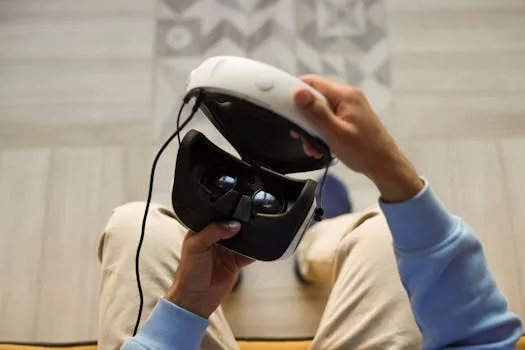
“
Futuristic Features: What to Expect from Wearable Tech Innovations in 2025
Introduction to Wearable Tech
Wearable technology has come a long way since its inception, with smartwatches, fitness trackers, and smart glasses being just a few examples of the many innovative devices available in the market. As we approach 2025, it’s exciting to think about the futuristic features that will be integrated into wearable tech. In this article, we’ll explore the latest advancements in wearable technology and what to expect from futuristic features in 2025.
Advanced Health Monitoring
One of the most significant areas of focus for wearable tech is health monitoring. In 2025, we can expect to see advanced health monitoring features that go beyond just tracking heart rate and steps taken. Wearable devices will be able to monitor blood pressure, blood glucose levels, and even detect early signs of diseases such as diabetes and cardiovascular disease. For example, the Fitbit Ionic and Versa series already offer advanced health monitoring features, including guided breathing sessions and female health tracking. For more insights, check out our article on bridging the gap between health and technology.
Artificial Intelligence Integration
Artificial intelligence (AI) will play a significant role in wearable tech in 2025. AI-powered wearable devices will be able to learn the user’s habits and preferences, providing personalized recommendations and insights. For instance, an AI-powered smartwatch can detect when the user is stressed and offer guided meditation sessions or suggest a relaxing walk. The integration of AI will also enable wearable devices to predict and prevent health issues, making them a valuable tool for healthcare professionals. Explore more about this in our post on the convergence of AI and wearables.
Augmented Reality Displays
Augmented reality (AR) displays will become a standard feature in wearable devices in 2025. AR displays will enable users to access information and interact with their surroundings in a more immersive way. For example, smart glasses with AR displays can provide users with turn-by-turn directions, display relevant information about the user’s surroundings, and even enable virtual try-on for clothes and makeup. The Microsoft HoloLens is an example of an AR-enabled wearable device that is already being used in various industries.
Brain-Computer Interfaces
Brain-computer interfaces (BCIs) will revolutionize the way we interact with wearable devices in 2025. BCIs will enable users to control their wearable devices using only their thoughts. For instance, a user can think about sending a message, and the wearable device will automatically send the message. BCIs will also enable users to control their surroundings, such as turning on lights or adjusting the temperature, using only their thoughts.
Conclusion
In conclusion, the future of wearable tech is exciting and promising. With advanced health monitoring, AI integration, AR displays, and BCIs, wearable devices will become an essential part of our daily lives. As we approach 2025, it’s essential to stay informed about the latest developments in wearable technology and to explore the many innovative devices available in the market. For a broader view, read our article on innovations that will change how we interact with the world.




1 thought on “Futuristic Features: What to Expect from Wearable Tech Innovations in 2025”
Comments are closed.